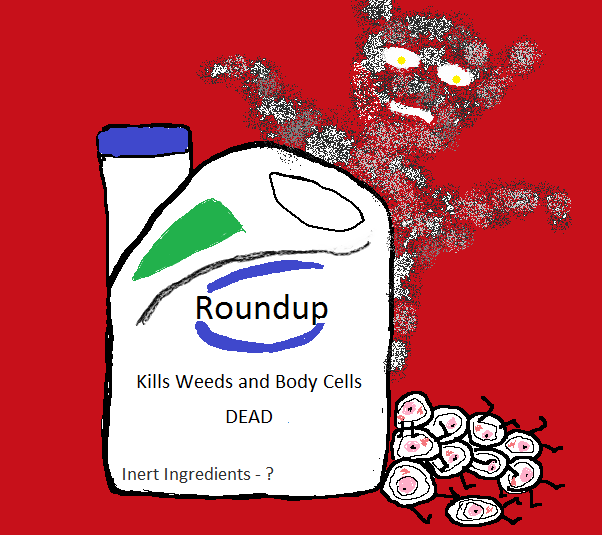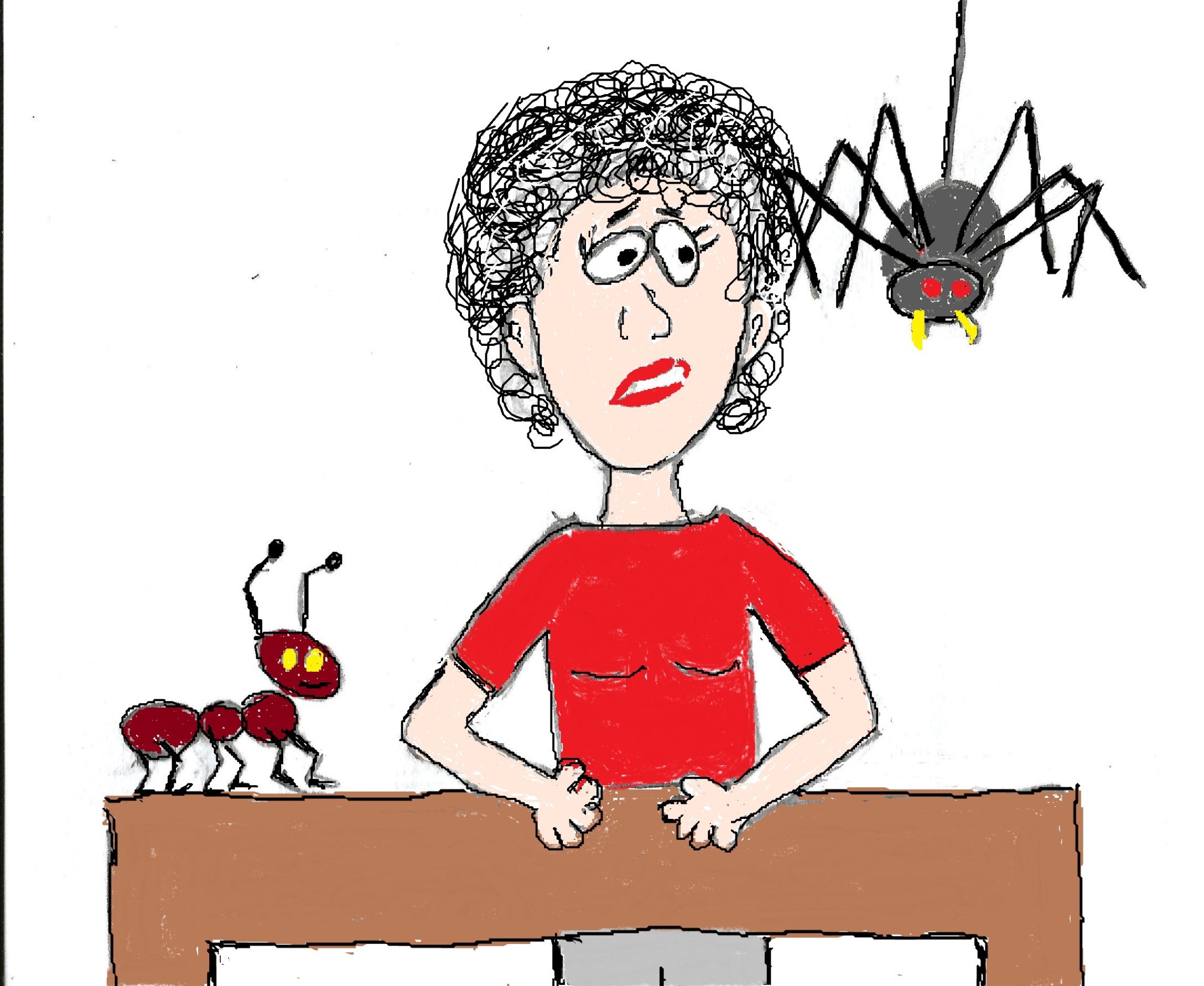The Secret Inert Ingredients That Kill
Inert
ingredients. They sound harmless but they’re the deadly secrets hidden in
pesticides. In fact, for 65 years, up to 99% of the ingredients in any given
pesticide product have legally been hidden from your view, even though many
are known to be toxic. And many can kill your body cells.
Pesticides are a combination of active and inert or inactive
ingredients. According to the EPA, there are currently more than 1,000 active
ingredients and about 4,000 inert ingredients in use.
But don’t be fooled by the term inert. These ingredients “may have biological activity of its own, it may be toxic to humans, and it may be chemically active” (EPA).
The mixture of active and inert ingredients is called a pesticide formulation. The pesticide active ingredient controls the target pest. In Roundup and many other weed killers the active ingredient is glyphosate, a probable carcinogen.
Inert ingredients are added to create formulas that improve the effectiveness of the active ingredient. These are called adjuvants.
For example, polyethoxylated tallowamine (POEA) is a detergent, derived from animal fat. It is added to Roundup and other herbicides to help the active ingredient glyphosate spread out and penetrate the waxy surface of a plant.
Other secret ingredients are emulsifiers to keep the ingredients from separating, solvents to dissolve the ingredients, aerosols for spray applications, preservatives, fragrances and dyes.
A big proportion of typical pesticide formulations are inert ingredients. In a survey of over 200 common household products in retail stores in Oregon, the Northwest Coalition for Alternatives to Pesticides found that these products contained on average 86% inactive ingredients.
There are several reasons why, when it comes to the dangers of pesticide exposure, the only thing worse than exposure to the active ingredients like glyphosate and 2,4-D, is exposure to the inert ingredients.
The Dangers of Pesticide Exposure Are Underestimated
The EPA’s efforts to protect us from the active ingredients in pesticides is less than stellar. And when it comes to protecting us from the inert ingredients in pesticides it’s downright pitiful.
Most of the tests required to register a pesticide are performed with the active ingredient alone, not the full pesticide formulation that includes all the ingredients.
And on their own, many inert ingredients are toxic. At least 455 such ingredients are in the Hazardous Substances Data Bank. Among these are carcinogens like coal tar, naphthalene, hexane and xylene.
And endocrine disruptors like dibutyl phthalate, plus hydrochloric and nitric acid and many petroleum distillates and fuel oils.
What’s even more frightening is that 1,863 inerts were of unknown toxicity. For example, the risk to your health from ingredients like nanoparticles, that are finding there way into more pesticides, are unknown. But it’s been estimated that about 50% of all inert ingredients are at least moderately risky.
Plus, some inactive ingredients are volatile organic compounds (VOCs). That means they are released from the pesticide concoction as a gas that you inhale.
Research suggests that some insecticide formulations release VOC levels high enough to be the cause of many of the general health complaints associated with spraying these pesticides indoors.
A Note About Your Pets Flea and Tick Products
In 2014 there was a huge rise in the number of new inert ingredients for non-food use pesticides. This includes flea and tick repellents for your furry family members.
Non-food use inert ingredients require even less scrutiny by the EPA and less toxicity info than food-use inert ingredients. To protect your pets consider natural flea and tick alternatives.
Inert Ingredients Make The Active Ingredients More Toxic
Insecticides work because they are toxic to insects. Herbicides work because they are toxic to plants. Fungicides work because they are toxic to fungi. And inert ingredients help pesticides to kill things.
So it makes sense that numerous studies show that inert ingredients increase the toxicity of pesticide formulations to your nervous system, cardiovascular system, cell mitocchondria, genetic material, and endocrine systems.
In fact, some pesticide formulas have been demonstrated to be up to 1000 times more toxic to human cells than just the active ingredient. A lot of recent research has focused on the inert ingredients in glyphosate-based herbicides like Roundup.
A 2013 study found that Roundup’s inert ingredients greatly increased the toxic effect of the herbicide on human cells. Even residues found on Roundup-treated crops, like soybeans, alfalfa and corn, or lawns and gardens could cause cell damage and even death.
And a 2016 study found that two inert ingredients, APG (alkyl polyglucosides) and POEA (polyethoxylated tallowamine) were 15–18 times and 1200–2000 times more toxic to cells than the active ingredient glyphosate, respectively.
And the inert/active ingredient glyphosate combo doesn’t just kill more body cells. They also disrupt your endocrine system at much lower levels than glyphosate alone.
A 2016 study found that the inert ingredients alone and mixed into the pesticide formula had endocrine-disrupting effects at concentrations 800 times lower than the agricultural dilutions of 1%. It took much higher concentrations of glyphosate alone (1/3 of the agricultural dilution) to have the same effect.
But it's not just herbicide formulas like Roundup that are more toxic than the active ingredient alone. A 2014 study compared the toxicity of 3 herbicide, 3 insecticide and 3 fungicide formulas and their active ingredients alone.
Fungicide formulas were found to be the most toxic, followed by herbicides and then insecticides, with very similar profiles in all cell types. And 8 formulations out of 9 were up to 1,000 times more toxic than their active ingredients.
And there are plenty of older studies on different types of pesticides and their inert ingredients that also found formulas to be more toxic than just the active ingredients.
Inert Ingredients Increase Your Exposure To Pesticides
So you have this toxic combo of inactive and active ingredients that you plan to spray in your yard to kill weeds or in your house to kill bugs. Seriously, if I have not convinced you yet that synthetic pesticides are a bad idea consider this.
Absorption through your skin is the most common way you’re exposed to pesticides when you handle or apply them. Some inert ingredients actually increase skin absorption or penetration of the active ingredient.
In a 2002 comparison of the skin penetration of three herbicide formulas, researchers found that penetration of the active/inert combos was 3–30 times greater than the penetration of the active ingredients alone. And many studies have identified several different solvents and surfactants used as inactive ingredients that increased the dermal absorption of the active ingredient.
And don’t think that wearing good rubber gloves and protective clothing is going to protect you. The active/inert pesticide combo can reduce the effectiveness of protective clothing. For example, solvents used as inerts in several types of herbicide, like 2,4-D (think Weed n Feed products) increase the penetration of active ingredients through 4 different types of gloves.
Inert ingredients also make it difficult to wash out any pesticide residues from clothing. So after you apply weed n Feed or Roundup in your yard, you might as well throw out your clothes.
And what does that mean for indoor surfaces sprayed with insecticides? Do they penetrate fabrics and stay there? I’m guessing they do and that increases that amount and time you’re exposed to these deadly secret ingredients.
Your Cells Are Counting On You
When it comes to pesticides, the active ingredients are toxic. The inert ingredients are often toxic. And the combo is frighteningly toxic.
The good news is, there’s no reason to expose yourself to the cell killing, health harming inert ingredients found in synthetic pesticides. There are plenty of good natural alternatives. I’ve lived in many different places and I’ve always been able to control pests with natural pesticides. Give these nontoxic options a try.
- For a general, all around indoor insecticide try Wondercide
- A great bug repellent is Skeeter Skidaddle
- Get physical to tackle garden weeds with a Hori knife
- Instead of Weed n Feed try corn meal gluten
- Defeat weeds with leaf mulch
For natural flea and tick prevention in your house and on your pets check out Non Toxic Flea Control and How To Safely Protect Your Pups From Fleas.
The secret inert ingredients in pesticides are dangerous killers - cell killers. And they are not only toxic on their own. They also increase the toxicity of the pesticides they're in and make it easier for your body to absorb them. Protect your health with less toxic approaches to pest control.







